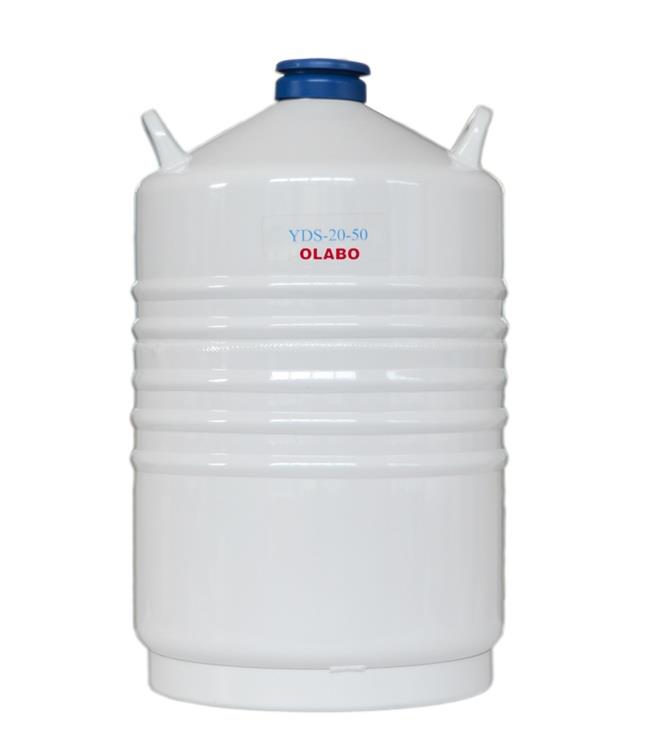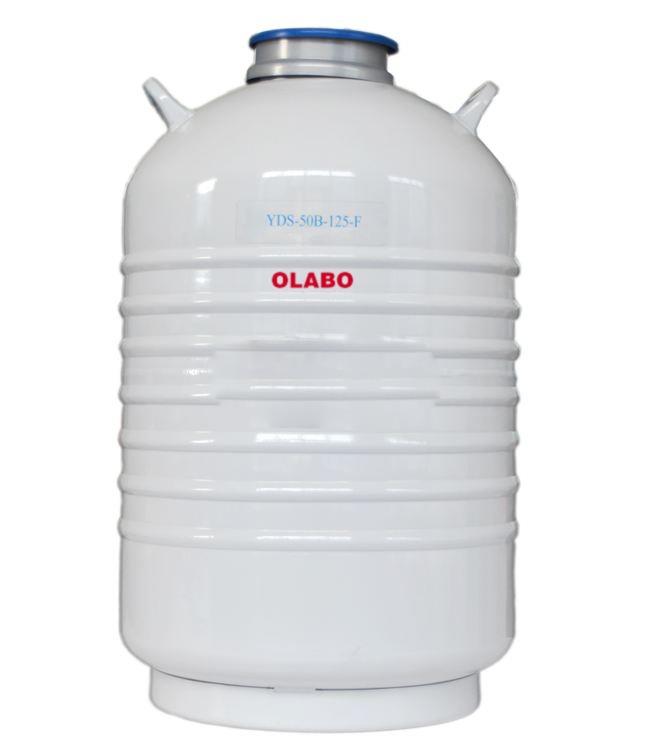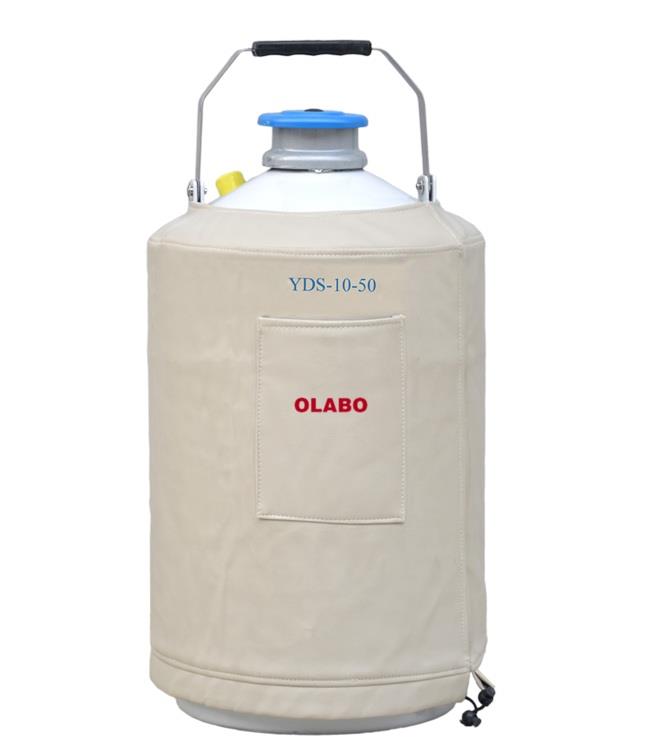Introduction:
Liquid nitrogen tanks can generally be divided into liquid nitrogen storage tanks and liquid nitrogen transportation tanks. The storage tank is mainly used for the static storage of indoor liquid nitrogen, and should not be used for long-distance transportation under working conditions; the liquid nitrogen transportation tank has a special shock-proof design to meet the transportation conditions. In addition to being stored statically, it can also be used for transportation when filled with liquid nitrogen, but severe collisions and vibrations should also be avoided.
Pictures



Use
1. Check before use
Before the liquid nitrogen tank is filled with liquid nitrogen, first check whether the shell is recessed and the vacuum exhaust port is intact. If it is damaged, the degree of vacuum will be reduced. In severe cases, the intake air cannot be kept warm, so that the upper part of the tank will be frosted and the liquid nitrogen will be lost, and the value of continued use will be lost. Secondly, check the inside of the tank. If there are foreign objects, they must be removed to prevent the inner tank from being corroded.
2. Filling of liquid nitrogen
Be careful when filling liquid nitrogen. For new tanks or tanks in a dry state, they must be filled slowly and pre-cooled to prevent damage to the inner tank and reduce the service life. When filling liquid nitrogen, do not pour the liquid nitrogen on the vacuum exhaust port, so as not to cause the vacuum to drop. The cover plug is made of heat-insulating material, which can not only prevent the evaporation of liquid nitrogen, but also play the role of fixing the lifting cylinder. Therefore, it is necessary to minimize the wear when switching to extend the service life.
3. Storage of liquid nitrogen in liquid nitrogen tank:
When storing liquid media in the liquid nitrogen tank, be sure to close the inlet/discharge valve and booster valve, and open the vent valve.
4. Transportation of liquid nitrogen in liquid nitrogen tank:
When transporting the liquid nitrogen medium in the liquid nitrogen tank, be sure to ensure that the switch status of each valve should be the same as that during storage, and place the base of the packing box under the circle of the container seat, and secure the liquid nitrogen tank container to the car with a rope. Make the liquid nitrogen tank not shake during transportation.
5. Infusion of liquid nitrogen in liquid nitrogen tank:
If you want to output liquid nitrogen from the liquid nitrogen tank, please follow the procedure below:
Close the vent valve; open the booster valve; observe the pressure gauge; when the pressure rises to 0.05MPa (0.5kg/cm2), open the drain valve, that is, continuous infusion is possible.
6. Inspection during use
Always check during use. You can observe with your eyes or touch the shell with your hands. If you find frost on the outside, you should stop using it; especially when the inner wall of the neck tube is frosted and frozen, it is not advisable to use a knife to scrape it to prevent the inner wall of the neck tube from being damaged, resulting in poor vacuum. It is necessary to take out the liquid nitrogen and let it melt naturally.
Custody
1. Placement of liquid nitrogen tank
The liquid nitrogen tank should be stored in a well-ventilated and cool place, and should not be exposed to direct sunlight. Due to its precise manufacturing and inherent characteristics, liquid nitrogen tanks are not allowed to be tilted, placed horizontally, inverted, stacked, collided with each other or collide with other objects, no matter when they are used or stored, they must be handled gently and kept at all times. upright.
2. Cleaning of liquid nitrogen tank
When the liquid nitrogen tank is not in use, rinse it with clean water, drain the water, blow it dry with a blower, and place it at room temperature for later use. After the liquid nitrogen in the liquid nitrogen tank is volatilized, the remaining missing material (such as frozen sperm) will quickly melt and become a liquid substance attached to the inner tank, which will corrode the aluminum alloy inner tank. If a cavity is formed, the liquid The nitrogen tank must be scrapped, so it is necessary to scrub the tank after the liquid nitrogen in the liquid nitrogen tank is exhausted. The specific scrubbing method is as follows: first take out the lifting cylinder in the liquid nitrogen tank, remove the liquid nitrogen, and leave it for 2-3 days. After the temperature in the tank rises to about 0°C, pour in warm water of about 30°C and scrub with a cloth. If you find that some melted substances stick to the bottom of the inner tank, you must carefully wash it off. Then rinse it with clean water several times, then turn the liquid nitrogen tank upside down, place it indoors where it is not safe to tip over, let it dry naturally, or use a blower as described above. Note that during the entire scrubbing process, the action should be gentle, the temperature of the poured water should not exceed 40°C, and the total weight should not exceed 2kg.
Third, the safe transportation of liquid nitrogen tanks
The liquid nitrogen tank must be cushioned and fixed in a wooden frame during transportation. The cans should be separated by fillers to prevent bumps and bumps and prevent dumping. When loading and unloading trucks, the liquid nitrogen tank should be strictly prevented from being hit by the liquid nitrogen tank, and it should not be dragged on the ground at will, so as not to reduce the service life of the liquid nitrogen tank.
Quality judgment
Liquid nitrogen tanks can generally be divided into liquid nitrogen storage tanks and liquid nitrogen transportation tanks. The storage tank is mainly used for the static storage of indoor liquid nitrogen. The liquid nitrogen tank should not be used for long-distance transportation under working conditions; the liquid nitrogen transportation tank is specially designed for shockproof in order to meet the transportation conditions. It can be used for transportation in a state of being filled with liquid nitrogen, in addition to being allowed to stand for storage of other items, but severe collisions and vibrations should also be avoided.
1. During the use of the jar, check the use of the jar at any time every day. Under the premise that there is liquid nitrogen in the jar, it is found that there are water drops or frost on the lid and upper part of the jar, indicating that the jar quality is defective. Stop using immediately;
2. When there is no water droplets or frost on the lid and upper part of the jar, touch the shell with your hand and feel cold on the upper part and hot on the lower part, indicating that there are some problems with the quality of the jar, that is, the daily increase and loss of liquid nitrogen is large. To prevent damage to the stored materials after the liquid nitrogen is depleted, it is best to stop using it if necessary; if the upper and lower temperatures are the same, it means that there is no problem with the quality of the tank.
3. After opening the cork, the mist in the bottle mouth does not overflow, but sinks, indicating that the jar is good.
4. Use your ears to listen to whether there are bubbles in the jar from the mouth of the jar. If it is more frequent, the jar quality will be problematic, otherwise there is no problem.


